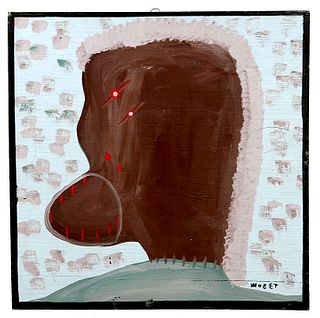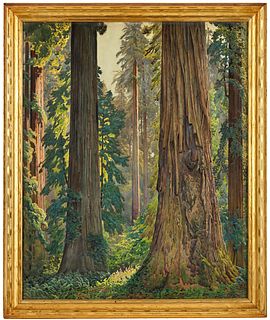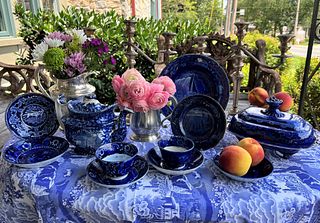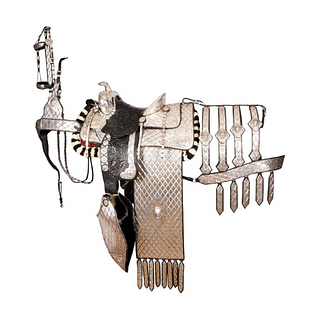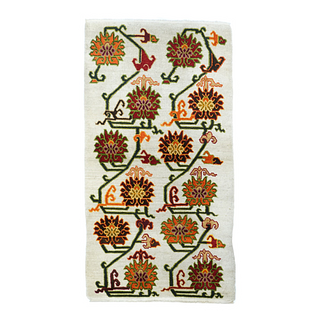Portrait of George Washington by Gilbert Stuart To Be Offered By Keno Auctions
Inauguration Day is upon us. A day filled with spangled pomp, ceremony, and historic speeches designed to frame the mood and aspirations of our young democracy. With the guidance of the Marine Band's harmonizing horns playing grand marches and national compositions, as they have for incoming presidents since Thomas Jefferson, a baton of political power will be passed.
At noon today, as mandated by the United States Constitution, on January 20, 2021, Joe Biden will be sworn in as the 46th president of the United States to mark the commencement of his four-year term as president and Kamala Harris as vice president. Our nation's very first inauguration of George Washington as the first President of the United States, however, was held on Thursday, April 30, 1789 on the balcony of Federal Hall in New York City. Washington's inauguration was held nearly two months after the beginning of the first four-year term of George Washington as President. Standing at a towering 6'3, Washington presented an impressive and somber figure as he took our nation's first oath of office - a mysterious silhouette for us modern citizens, the essence of which we can only admire with distant wonder through art and literature.
Lot 3, Gilbert Stuart (American 1755-1828) Israel Kinsman Portrait of George Washington 1803-1805, Oil on canvas
30 ½ x 25 ½ inches. Estimate $150,000-$300,000
On January 23, Keno Auctions will offer a portrait of George Washington of the utmost significance. This oil on canvas portrait painted by Gilbert Stuart, widely considered one of America's foremost portraitists, is planned to grace the auction block, in their upcoming 'Americana and Estates Auction' - only three days after our nation's 59th inauguration ceremony.
Detailed in Keno Auctions catalog and presented below is the full, informative essay highlighting the exciting story of this historic portrait:
Israel Kinsman, a Philadelphia merchant, purchased this portrait of Washington 1817-1820, at the same time as his marriage to Elizabeth Walker (1797-1848) for his residence at 359 Arch Street, Philadelphia. The portrait is mentioned in his household inventory in 1835 (1) as a “Stuart-Washington in oil color” in “Front room 2nd story”.(2)
Experts Ellen G. Miles and Carrie Rebora Barratt, in their informative tome about Gilbert Stuart, have identified three distinct periods of paintings and replicas of Washington by Gilbert Stuart. The first period (1794-1803), began when the artist first arrived in Philadelphia from New York in November of 1794, expressly to paint George Washington.(3) His first portrait of Washington, known today as the Vaughan type portrait, was painted some time in 1795. Early portraits of this period show Washington with a long oval face and a delicate lace ruffle.
Lot 3, Gilbert Stuart (American 1755-1828) Israel Kinsman Portrait of George Washington 1803-1805, Oil on canvas
30 ½ x 25 ½ inches. Estimate $150,000-$300,000
Stuart painted his portraits, with the exception of full-length portraits, on canvases measuring approximately 30 x 25 inches, a standard English size canvas used in the eighteenth century. This was a smaller canvas than the sizes he used in Britain (36 x 28 inches and 50 x 40 inches) for portraits, suggesting Stuart was making smaller portraits to fill the huge demand for his portraits of Washington. Even in the smaller canvases, Stuart still succeeded in representing the individual personalities of his sitters.
Stuart subscribed to the theory of physiognomy, a study that the outward body could reveal a person’s character. An Englishman, Isaac Weld Jr. recorded Stuart as saying about Washington that “the sockets of Washington’s eyes...are larger...and the upper part of the nose broader… his features indicative of the strongest and most ungovernable passion”(4) This was an indication of Stuart’s discernment and knowledge of human countenance.
Lot 3, Gilbert Stuart (American 1755-1828) Israel Kinsman Portrait of George Washington 1803-1805, Oil on canvas
30 ½ x 25 ½ inches. Estimate $150,000-$300,000
The portraits of Washington completed during this period depict a long torso and dark eyes, with a lace jabot and saw-toothed queue ribbon. The shirt lace in Stuart’s early replicas of Washington were painted by him using the dark color up to the outer edges of the lace and then painting the lace area white and adding dabs of gray-black paint within the lace to suggest the dark coat beneath. The same technique was employed to paint Washington’s powdered hair. (5)
George and Martha Washington visited Stuart at his studio in Germantown, north of Philadelphia where, in January 1797, Washington sat for the portrait now known as the Athenaeum portrait. Reportedly, Washington initially gave the artist permission to keep their unfinished portraits in order to make replicas.
Several noted artists had flocked to Philadelphia in the 1790’s, including American and European artists to establish a school, the Society of Artists of the United States. Stuart was flattered to be elected by his peers to become a member of the Society; however, Philadelphia could not offer the same sympathies as he had known in London, where great artists were, in general, held in higher esteem. He concluded that Federal America was not sympathetic to artists and after an exploratory visit to Washington D.C. in August 1802, Stuart moved his portrait painting business to Washington in December of 1803.(6)
Lot 3, Gilbert Stuart (American 1755-1828) Israel Kinsman Portrait of George Washington 1803-1805, Oil on canvas
30 ½ x 25 ½ inches. Estimate $150,000-$300,000
The Kinsman portrait fits snugly into the second period of the Stuart portraits of Washington (1803-1805). Miles and Barratt discuss a group of portraits owned by patrons in Philadelphia, Baltimore and Washington. They are based on the “Athenaeum” portrait, which Stuart painted of George and Martha Washington from life in autumn of 1796, when Washington was sixty four years of age. The Athenaeum portraits, which Miles and Barratt include in Gilbert's Washington, D.C. period include “...one at the Pennsylvania Academy of Fine Arts, the bequest of Paul Beck, Warden of the Port of Philadelphia; one first owned by John Richards, Agent for Baring Brothers in America, now in the collection of the Everson Museum of Art, Syracuse, NY; a portrait previously owned by Charles Cotesworth Pinckney, Minister to France from 1796 to 1798, now in the National Portrait Gallery in London; and a portrait previously owned by Robert Barry of Baltimore, which is now in the White House Collection, D.C.”. (7)
Details of the portraits from this second period (1803-1805), which include the Kinsman portrait, depict Washington’s shirt ruffle with a less intricate, stylized ruffle of linen and not lace as seen in portraits of the preceding [pre-1803] and following [post 1805] periods.
In the Kinsman portrait, set against a dark background which contrasts with his white hair and blue eyes, Washington sits off center with his head turned slightly to the viewer’s left dressed in a black velvet suit and white shirt with linen ruffle. Like the original Athenaeum portrait, it is painted on basketweave canvas, and retains its original stretcher and giltwood frame with only minor areas of inpainting, most of which appears to cover original paint beneath.
Lot 3, Gilbert Stuart (American 1755-1828) Israel Kinsman Portrait of George Washington 1803-1805, Oil on canvas
30 ½ x 25 ½ inches. Estimate $150,000-$300,000
Washington’s body is less defined in these replicas and his coat is very flat and brushstrokes applied in a cursory manner. In the Kinsman portrait, the faint brown lines that can be seen under the flesh tones were probably part of Stuart’s copying process. Washington’s jawline is more square in the portraits painted during this period than in later replicas. Stuart was known for beautiful coloring of flesh and other features in his portraits and this is especially well shown in the color of Washington’s eyes in the Kinsman portrait. Stuart was once asked why he painted the eyes in such a high shade of blue, and he said, “In a hundred years, they will be the right color.” (8)
The artist and noted expert on Historical colonial paintings, Albert Rosenthal (1863-1939), writes about the Kinsman portrait on April 8, 1919:
“This portrait of Washington by Gilbert Stuart is to my mind one the the very good replicas made by Stuart of his most popular portrait of Washington known as the Athenaeum head in the Boston Museum. It is brilliant in color splendidly drawn and…[illegible]” (9)
The third and final period comprises his Athenaeum portraits after moving to Boston in 1805. All of the Stuart replicas completed during this period show a rounder face compared to earlier ones and are painted in a softer manner. The lace ruffle of Washington’s shirt is often abbreviated and his hair is tied with a small ribbon rather than a large bow. Details appear to be done quickly with less definition and are of smaller size. (10)
View the entire Keno auction catalog as well as the additional ledger of documentation and provenance for this portrait. Register to bid live on auction day via Bidsquare.
____________________________________________
Footnotes:
1. Hand-written letter by owner of portrait, Israel Kinsman’s grandson, Edgar Kinsman entitled: “History of the Kinsman Stuart -Washington”
2. Lawrence Park, “Gilbert Stuart: An Illustrated Descriptive List of His Works”, vols I and II (New York, 1926) Vol l p. 47 and Vol ll p. 882, no. 75
Letter by then-owner and grandson of Israel Kinsman, Edgar Kinsman entitled, “History of the Kinsman Stuart -Washington”
3. Barratt, Carrie Rebora, and Ellen G. Miles, “Gilbert Stuart”, Metropolitan Museum of Art, (New Haven, Yale University Press), 2005 ; Lawrence Park, “Gilbert Stuart: An Illustrated Descriptive List of His Work”, (New York, William Edwin Rudge), 1926. Vol I, p.47
4. Barratt and Miles, p. 137
5. Ibid p. 160
6. Ibid
7. Ibid
8. Appraisal of Kinsman portrait: “Portrait of George Washington” by Jonce T. McGurk, Stuart Expert and Historian of American Fine Art, (typed copy) Before March 15, 1920; McGurk’s assessment was referred to by Lula Merrick’s discussion of the Kinsman portrait in “In The New York Art Galleries”, The Spur, March 15, 1920, pg. 47- 48.
Mantle Fielding, Gilbert Stuart’s Portraits of George Washington, Wickersham Printing Co., Lancaster PA. 1923, p. 196, No. 75; Lawrence Park, Gilbert Stuart: An Illustrated Descriptive List of His Work, (New York, William Edwin Rudge);
7. Barratt and Miles, p. 160
8. McGurk, p. 2
9. Albert Rosenthal (1863-1939) Annotated photograph of Kinsman Portrait of George Washington dated "April 8, 1919"
10. Barratt and Miles, p. 162-166
Condition
The painting has survived in a remarkable state of preservation, retaining its original stretcher and original frame. Most of the original nails survive along the tacking edge. In the (probably) late 19th century minor very minor spots of inpainting were applied in the background of the portrait near left side and along extreme top edge aligning with stretcher, etc. Over paint has been liberally added (ie:more broadly painted than was necessary) primarily at right side of neck and along extreme right side of face up to right side of forehead.
Condition report and proposed conservation by conservator Simon Parkes dated 1/12/2021 is posted in images and is as follows:
"This work has not been restored for many years, but it is clearly in very good condition. The canvas has never been removed from its original stretcher. Although the surface is slightly uneven, there are no raised cracks or structural damages. The stretcher can be expanded to correct the surface. The paint layer is extremely dirty, with a visibly yellowed varnish. There are old retouches that are faintly visible under ultraviolet light. All of these retouches are very broadly applied. There are retouches in the darker colors in the face, for instance under the chin and in the jaw on the right, and in the shadowed color of the wig on the far right. Broad strokes of retouching are present in the black coat and in areas of the background. There is a disturbance to the varnish in the coat in the lower left, which only interferes with the paint layer in two very small spots. While retouches would be necessary if the work were cleaned to remove the yellowed varnish and existing restoration, they could be much more accurately and minimally applied.
- Rafael Osona Auctions' Modern & 19th Century Design From Nantucket Estates
- Quilts as a 2025 Design Trend: A Celebration of American Heritage and Craftsmanship
- A Celebration of Sports History and Collectibles
- The Thrill of Sports Memorabilia Auctions: A Collector’s Paradise
- Demystifying Coin Condition: A Guide to the Sheldon Grading Scale
- Snoopy & Friends: A “Peanuts” Auction at Revere
- Colorful Chinese Monochromes at Millea Bros
- 12 Holiday Gifts for the “Impossible to Buy For” on Bidsquare
- Alluring Art Objects and Accessories from the Estate of Chara Schreyer
- Kimball Sterling's One-Owner Outsider and Folk Art Collection Showcases Masters of the Unconventional



 EUR
EUR CAD
CAD AUD
AUD GBP
GBP MXN
MXN HKD
HKD CNY
CNY MYR
MYR SEK
SEK SGD
SGD CHF
CHF THB
THB

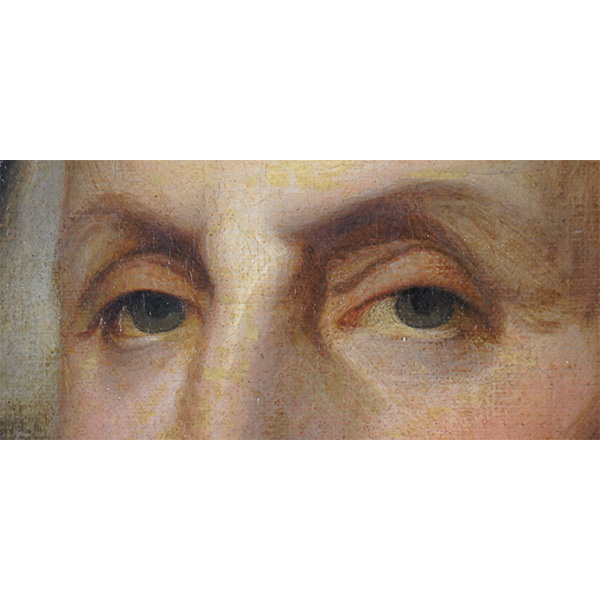
.jpg)



